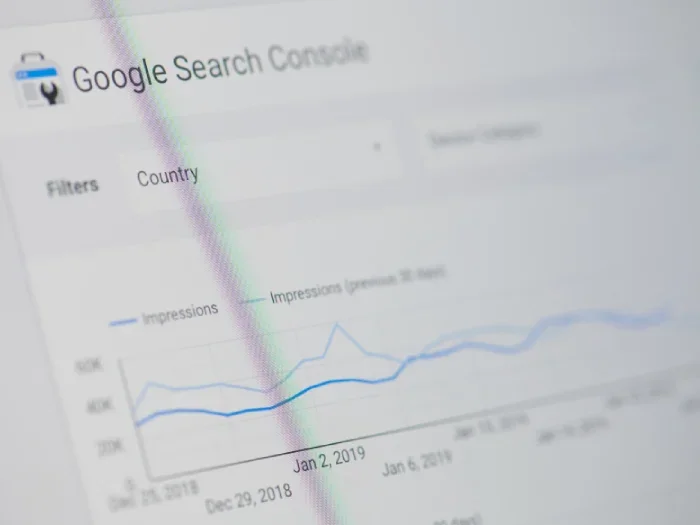
Leading US online publishers reported an average fall in referral traffic from Google search of 10% in May and June compared to a year earlier.
The new figures came from a survey by US trade association Digital Content Next (DCN) of its members, defined as both news and non-news publishers.
Nineteen companies are represented in the data. They have been anonymised but are said to include “major national newsrooms” and “global entertainment brands”.
DCN said the median average (typical) year-on-year decline in traffic referrals from search among the 19 publishers was 10% but higher for non-news publishers at 14%. Search referrals to newsbrands decreased by 7% in that time.
Google first launched AI Overview summaries at the top of many search results in the US in mid-May 2024. About a year later it rolled out its new search experience AI Mode, which sits in a separate tab and responds to queries in a chatbot style.
Google search traffic changes ‘not random fluctuations: they are sustained losses’
DCN chief executive Jason Kint wrote in a blog post with the new data: “The worst weeks were brutal: news brands plunged 16% the week of May 25th; non-news fell 17% the week of June 22nd.
“Mind you, these aren’t random fluctuations. They are sustained losses hitting both breaking news publishers and evergreen entertainment brands.
“And let’s not forget that this is the exact content Google’s AI is trained on and now replaces with its own summaries. The company that has long draped itself in the flag of the open web is now trampling it, trading the public square for a walled garden built on monopoly profits.”
Kint noted that non-newsbrands were especially hit as they saw a “downward slope” that was “steady and unbroken” across the eight weeks.
DCN members had suggested that breaking news is currently more protected from Google’s AI summaries. However, Kint warned: “As the AI models improve and update faster with daily training, even those moments of publisher advantage may vanish.”
The decline matters, Kint said, because 78% of digital revenue to DCN members still comes from advertising which tends to depend on reaching as many people as possible. “Every point of search traffic lost to AI modules squeezes the budgets that fund investigative reporting, global coverage, and ambitious entertainment,” he said.
Kint called for “auditable data” on Google AI Overview clickthrough rates by query type, content category and geography.
Google has been widely criticised for making statements about “relatively stable” click volume and “high quality” clicks without sharing actual figures or allowing websites to analyse their own AI Overviews data.
He also echoed calls for publishers to have the ability to opt out of appearing in AI answers without having to essentially remove themselves from having full visibility in the main Google search results.
He also called for Google to make AI licensing deals, as the likes of OpenAI, Amazon and Perplexity have done with many major news publishers, and for AI Overviews and AI Mode to be treated as part of Google’s search monopoly to ensure full regulatory oversight.
PPA shares examples of lifestyle and product review sites hit hard by Google AI Overviews
Similar calls were made on Thursday by the Professional Publishers Association to the UK’s Competition and Markets Authority: for Google to be told to be transparent in its crawling for AI and search, to show data in Google Search Console on where publisher content appears in AI Overviews and AI Mode, to be transparent about referral sources in Google Analytics, and for clear attribution and “functional” linking when content appears in AI summaries.
The PPA cited one of its member publications, a lifestyle magazine, which continues to rank on page one for the query “how to get rid of” a certain insect but its clickthrough rate has fallen from 5.1% to 0.6% over the past year.
An automotive publisher reported a 25% drop in traffic to articles ranking first in organic search, despite a 7% increase in search visibility, the PPA added.
And a publisher specialising in product reviews, such as lists of the “best” items to get, said it has seen AI Overviews appear between 30-37% of the time for its keywords and that its clickthrough rate is between 25-50% lower when that is the case.
Several studies published in the past month have shown decreases to traffic going to publishers since the launch of AI Overviews.
A report by Enders Analysis looking at Sistrix data for UK national titles the Financial Times, The Telegraph, Daily Mail, The Sun, Mirror and The Guardian found “some correlation” in a decline in visibility in search results of up to 80% compared to 2019, with the launch of AI Overviews.
Research by AI search and SEO platform Authoritas found a per-query clickthrough rate loss of almost 50% when an AI Overview appears.
Among the top 100 publisher sites analysed by Similarweb, the average rate of zero-click searches (in which people do not click through to a website after their initial query in Google) has gone from 50.5% to 52.7% in the past year. But from a much broader dataset this has increased from 56% to almost 69%.
And Pew Research Center found that Google users who see an AI summary at the top of their search results are less likely to click through to another website (8%) compared to those who were not shown one (clicked through 15% of the time).
Google has said recent data linking a drop in search referrals attributed to AI Overviews are “often based on flawed methodologies, isolated examples, or traffic changes that occurred prior to the roll out of AI features in Search”.
But SEO and publishing experts hit back at this suggestion, citing a wealth of first-party data from Google Search Console backing up the trend.
Email pged@pressgazette.co.uk to point out mistakes, provide story tips or send in a letter for publication on our "Letters Page" blog
